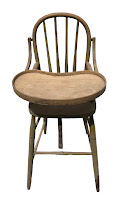 |
| Pie Safe Before |
 |
| Pie Safe After |
This pie safe was very, very old. My customer had told me it belonged to her great-great grandmother and had originally come from West Virginia. She believes it dates back to the mid-1800’s. It is one of the oldest pieces of furniture we have restored and refinished so far.
(Another one is a steamer trunk, also from the mid-1800’s which will hopefully be done this month, so stay tuned!)
This pie safe had been through many, many years and oh, the stories it could tell if it could speak! It had been around during the civil war, the great depression and had paralleled the election and death of many presidents as well as welcoming many children, grandchildren and great-grandchildren to this world.
While it had “good bones,” it needed a great deal of work and of course, time. The top was bent and warped, the metal and body had been painted numerous times and was literally “caked” on, so it made sense to take this oldie apart and restore each piece separately as this allowed better access to the metal work and gave Jim a chance to straighten out and repair a few things, such as the broken bottom drawer and bent, warped top.
After removing a few layers of paint from the body, Jim painstakingly began a 7-week process of removing all the paint from the tin, which had a lovely pattern which was all but hidden beneath that paint. He chose to use a drill bit that matched the size of the holes to remove the paint which had seeped into each hole, then used a wood carving tool to remove the rest. This was a very long, tedious process, but it was the only way to do it right. Once done, he had to prime then paint the metal and let it dry completely before I could paint the body.
The customer had originally wanted the pie safe stripped and stained, but once the old paint was removed, the wood used to create this pie safe wasn’t stain-worthy, so we opted for painting it white with copper spray paint for the metal inserts which had a beautiful circular design, practically invisible under all that paint. The copper was an excellent choice, as it highlighted the beautiful paint color, Sherwin-Williams "Cotton White.” For a finishing “fun” touch, I selected polka dot knobs to replace the old wooden ones to add a touch of whimsy.
After this old beauty was done, the results were absolutely stunning, one which will go into our “Finale Hall of Fame,” for sure. Definitely a great and beautiful item of furniture which will be lovingly used for many years to come.















































